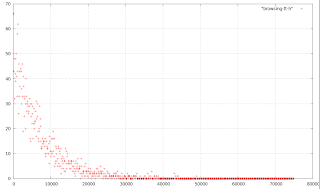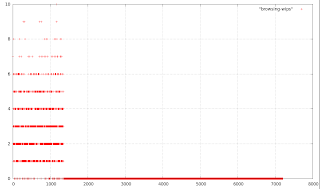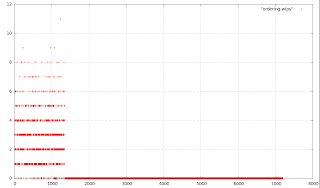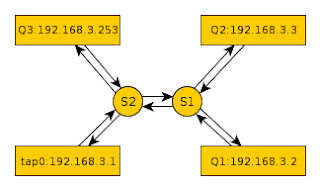I am home again and am heading soon to Germany. MoMo-Estonia already released their summary of the event at http://www.momoestonia.com/2011/03/summary-estonian-entrepreneurs-in-st.html and therefore beat me to mine. However, I will still share here my own personal view of the event with you. Just for a short summary, it was a great event with plenty of networking and interesting presentations. I would have wished having more student and academic contacts, but probably I should have done more local advertising in advance. However, I got valuable contacts and look forward to following up with them.
Saturday, 26.03.2011
I just took a bus late afternoon to Tallinn. (Related blogpost.)
Monday, 27.03.2011
| [](https://picasaweb.google.com/lh/photo/A1l1s2kLVUuWmK9Md_Dezw?feat=embedwebsite)
|
| From [2011-03 MoMo St. Petersburg](https://picasaweb.google.com/UNorbisrath/201103MoMoStPetersburg?feat=embedwebsite)
|
We start off in Tallinn at 8am in a very spacious and luxurious bus. (Related blogpost.) We made good progress and had only a small delay at the border. Thanks to this, we had an opportunity to do a little bit of sightseeing of St. Petersburg (take a look at the pictures in this blogpost) and enjoy this picturesque city. This was followed by a nice dinner at a Greek restaurant with representatives of the local MoMo chapter.
Monday, 28.03.2011
| [](https://picasaweb.google.com/lh/photo/OV__mJXwgf8vS6Gic034nw?feat=embedwebsite)
|
| From [2011-03 MoMo St. Petersburg](https://picasaweb.google.com/UNorbisrath/201103MoMoStPetersburg?feat=embedwebsite)
|
We started the next day with visiting Reksoft, where we received a very friendly and well-prepared welcome with lots of opportunities to ask questions. They had three speakers from different areas of the company for us. I asked a couple of questions concerning their relation to research and academia. It turned out that they are currently mainly offering services to do interns and teach students, but do not really receive services from universities. However, some of them were openly interested in tighter collaboration wit universities.
| [](https://picasaweb.google.com/lh/photo/wOHq_-q9LIhKrRcD-dvvAA?feat=embedwebsite)
|
| From [2011-03 MoMo St. Petersburg](https://picasaweb.google.com/UNorbisrath/201103MoMoStPetersburg?feat=embedwebsite)
|
After being at Reksoft, we visited the Estonian Consulate General, where we had a nice lunch with fresh pirukas and got an inside view by a local Estonian entrepreneur about dealing with local businesses. I have to admit that I cannot comment much about this part as my Estonian is (still) not good enough to understand a technical conversation.
In the evening we had the official Mobile Monday St. Petersburg event, where the Estonian companies presented themselves. I am sharing here my personal notes on the talks which were given. If there is critique involved, I ask potential readers not to take it personally, just blame it on me weird academic and my attitudes.
As important supporter of this event, Valdar Liive presented Enterprise Estonia. He presented initial facts about Estonia and presented a lot of bullets about successful e-services implemented in Estonia. The Estonian ID-card was also presented, however the number of bullets were a little too much for my taste. I think that the Estonian ID-card, Mobile ID, and related services could have been sold a little bit stronger -- I guess we are a little too modest some times in Estonia.
J. Margus Klaar did a nice job branding their own company Brand Manual. If I understood it right, they are helping other companies to brand their products. He was just stressing a bit too much that he stayed under 10 minutes with this talk ;-) I also had a good talk with Margus pointing me to a nice government e-eco system, which they currently seem to try out in Viljandi. Maybe there is some room for collaboration with UT here.
Technopolis (presented by Jukka Jokinen) seems to be a provider of business space but claims to be more than a real estate agent. They offer support and services in all areas relevant for IT start-ups. The talk was a little hard to follow as the actual point what the advantage of Technopolis in Russia means for local business was overloaded by plenty of bullets on the slides.
Priit Salumaa presented the Garage48 project exploring the possibility to turn an idea into practice on a weekend with a team of passionate developers and designers. He also showed how this way of development inspired the foundation of Mooncascade using and selling this idea and strategy in a commercial way. Priit clearly showed that he personally very much prefers agile development over old school development - -was this our influence on him in his study time in Aachen, Germany?
Indrek Petersoo presented Ericcson products like mobile payment, messaging, especially bulk messaging. It was a quick and informative talk. I also had plenty of opportunity to socialize with Indrek on this event and look forward to have other opportunities to continuing this information exchange.
Fortumo presented by Andrei Demetjev showed the history of their company their services and a nice demo how their services actually work. Unfortunately the talk got a little too long, but everything presented was very interesting. I kind of liked the bashing on Google's in app payment and would have liked to see a direct comparison. Of course also the references to Angry Birds and Travian were very impressive. I hope we can win people from Fortumo or Mobi to support us at the University of Tartu executing our teaching related mobile activities starting in next term.
The Estonian Developerfund was presented by S9tanislav Ivanov. Unfortunately this talk was in Russian. I think the audience very much appreciated it, but for me it meant that I did not understand anything. After some networking in the previous evening, I expected Stanislav to be a good speaker and hope to have another opportunity to attend one of his presentations.
Jaanus Truu presented SeeMee, which I understood being a Software helping in managing any kind of fleets. It can show you which vehicle of your fleet is where and help you plan routes of your other vehicles. The talk was very dense with information and after the Russian talk I had a hard time following. I had a good time socializing with Jaanus later and look forward getting to know his company deeper on other opportunities.
Sven Kirsimäe presented the part of Regio concerned directly with GIS (Geographical Information Systems) and LBS (Location Based Services): ReachU (I hope I got the relation of ReachU and Regio right -- was not clear from the talk). They provide such services based on data from (for example or only?) Ericsson. As an example Sven mentioned family finder, allowing family members (or parents) locating and checking on their relatives (children). The talk was very dense and I would have wished it would have been a little more crisper and to the point.
Nutiteq, presented by Jaak Laineste is a company also offering GIS and LBS services. Jaak explained that his switch from reach-u to nutiteq was a switch from developing for the server side to developing for the client side. He advertised a freely available toolkit supporting multiple mobile platforms (I promise, I will take an intense look) and presented several interesting examples like Trapster and Navteq. Jaak is a passionate and capturing speaker. It was very interesting to listen to his talk and network with him. I hope we can win him or one of his colleagues as a supporter of our teaching related mobile activities at the University of Tartu. He seems to be also involved in creating a mobile curriculum and I hope we can merge our efforts here.
This was my own talk. I presented our mobile related research activities and tried to advertise possibilities to study with us and benefits of doing joined research with us. I inquired in the talk how many students and academics were present and found out that there was less than a handful. This was not what I was expecting after experiences with local Mobile Monday events in Estonia, where we usually have quite some students and some academics present. However, when asking for people who are involved in research activities more than half of the audience committed to this. My slides can be downloaded on http://momo.ulno.net.
Mart Uibo presented Positium with a very flashy (prezi.com-based) presentation. They deal with mobile positioning and evaluate position data of customers via their mobile profile. They can provide interesting data for shopping centers in terms of showing them where their customers live and where they also go shopping or provide valuable data in emergency situations, meaning using positioning data and finding out where people come from, and where they go. Priit mentioned here that he had a bad feeling about this being a legal way of using data. I am pretty sure that this would be discussed in for example Germany very controversially. However as a researcher, I have to admit that being able to harvest such data in such ways, offers very interesting perspectives. Maybe Mart could have sold this as a clear advantage of the location of an open minded Estonia and resulting in possibilities for start-ups, which would be not possible in other parts of Europe.
13. Networking
As usually the Mobile Monday was concluded by a networking session. Most people here were talking in Russian. English seemed to be a very uncomfortable choice for a lot of the present people. I had not expected this, making the networking very hard on my end. Nevertheless, I made some interesting contacts to local companies and got some offers to put me in touch with local academics -- I hope my personal follow-ups of this event will be fruitful.
Tuesday, 29.03.2011
| [](https://picasaweb.google.com/lh/photo/sxIjoILXMykEw_E-GWbbZA?feat=embedwebsite)
|
| From [2011-03 MoMo St. Petersburg](https://picasaweb.google.com/UNorbisrath/201103MoMoStPetersburg?feat=embedwebsite)
|
The next morning, we first visited the recently renovated Jaanikirik (St. Johns Church) in St. Petersburg. We were educated about its history and got a tour to the bell-tower, enjoying a gorgeous view over the city.
| [](https://picasaweb.google.com/lh/photo/nY1q0vFRJtS-N9OAfViGbg?feat=embedwebsite)
|
| From [2011-03 MoMo St. Petersburg](https://picasaweb.google.com/UNorbisrath/201103MoMoStPetersburg?feat=embedwebsite)
|
After this, we continued to Technopolis Pulkovo. It was a pretty long drive out there from our hotel -- reminding me of how nice it is to live in a small but culturally still thriving city like Tartu, where it takes me five minutes on foot to go to work. In Technopolis Pulkovo we had the second part of the Mobile Monday, where Russian companies presented to us. The first striking thing here was the possibility to do stereo presentation (the same presentation on two projectors - one left, one right)! Not sure, what effect it has, but it was kind of cool.
1. Russoft
We started with the presentation by Rusoft, presented by Valentim Makarov. Russoft is an association of software development companies from Russia, Byelorussia, and Ukraine. We were presented a lot of impressive data. However, I did not understand how we - as Estonians - could collaborate with them.
2. UFT, member of i-free
Andrey Kupryakhin presented UFT. They seem to do a lot of game development, have lots of partnerships, and offer some nice contacts to operators. Due to so much information, the talk was a bit hard to follow, so that I might have missed here some points.
3. e-legion
e-legion is presented by Alex Zverev. He is visibly a little nervous as this is his first English talk - in my opinion he did a very good job. e-legion seems to be specialized on mobile application development for iPhone OS, Android, and WP7. He presented some of the games that they develop and stressed their capabilities in agile development.
4. Generatum Software
Igor Rodionov presented Generatum Software. He presented and demonstrated bubuta -- a new mobile world of interactive amusing chats. It allows to pay for special message gimmicks. Bubuta could attract over 70,000 user in its first two month. It seems to use a proprietary chat protocol (why not use XMPP?). The talk is very entertaining but for me there is still the question, why we need another chat client - however, maybe 70000 user is a good argument. He presents some interesting facts: j2me generates the most revenue for them, Android up to 15%. To me it felt as if we could do something similar based on F2F Computing in a more interoperable way and even allow features for the future.
5. IT-Dominanta
IT-Dominanta is a recruiting company and presented by Ekaterina Durkhisanova. She presented some very interesting numbers in terms of developers available and demanded for different mobile platforms and their respected salaries. It was interesting to see that the salaries seem to be comparable to Estonia, but have very few benefits.
6. Nevaline
Nevaline was presented by Alexander Lebedev. They are content provider and seem to do a lot with VoIP. Alexander was a very nice presenter but he presented so many facts for his company that his call for fresh ideas as a mean of collaboration lacked a bit the focus in what kind of ideas they might be interested.
7. Networking
After the sixth talk, there was some time for networking in which _ _had similar language issues as on the previous day. After networking we could enjoy a tour through Technopolis facilities and have some lunch at their cafeteria.
| [](https://picasaweb.google.com/lh/photo/tBdKCr_8RymZZ6QBcon_vw?feat=embedwebsite)
|
| From [2011-03 MoMo St. Petersburg](https://picasaweb.google.com/UNorbisrath/201103MoMoStPetersburg?feat=embedwebsite)
|
Summary
Overall, I enjoyed this Mobile Monday Event in St. Petersburg very much. I definitely think that this is a good start for possible collaboration and exchange in the mobile market for Estonia and Russia. It would have been nice if I could have made more academic contacts, but I hope the contacts I made will allow me to follow up and get in touch with others. Thanks a lot to the organizers and I am looking forward to meeting people from St. Petersburg in September in Tallinn.
For more reading, here is some press coverage, we got in St. Petersburg and links to MoMo in Estonia and Russia:






